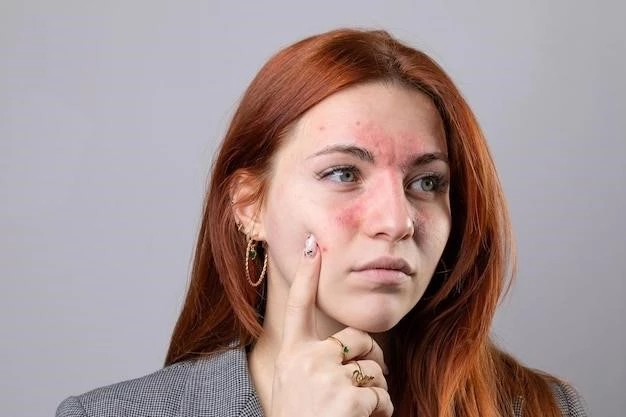Introduction to Xeroderma Pigmentosum, Type 1
Xeroderma Pigmentosum (XP) is a rare genetic disorder characterized by extreme sensitivity to ultraviolet light and a high risk of skin cancer development. Learn more about this condition and how to manage it effectively.
Overview of Xeroderma Pigmentosum (XP)
Xeroderma Pigmentosum (XP) is a rare genetic disorder characterized by extreme sensitivity to ultraviolet light, leading to sunburn, pigment changes in the skin, and a significantly high risk of developing skin cancers, including basal cell carcinoma, squamous cell carcinoma, and melanoma at an early age. This condition is classified into types A-G or V based on the responsible genes. Patients with XP, particularly those with XP Type 1٫ require strict sun protection measures and regular monitoring for skin cancers to manage the impact of this condition effectively.

Causes and Prevalence of Xeroderma Pigmentosum, Type 1
Xeroderma Pigmentosum (XP) is a rare genetic disorder characterized by extreme sensitivity to sunlight, resulting in sunburn, pigment changes in the skin, and a significantly high risk of developing skin cancers. It is a rare autosomal recessive disorder with varying prevalence rates across different regions, estimated at approximately 1 in 20,000 in Japan and 1 in 250,000 in the USA.
Genetic Defects in Proteins Involved in DNA Repair
Xeroderma Pigmentosum (XP) is a rare autosomal recessive disorder caused by genetic defects in proteins responsible for DNA repair. Specifically, individuals with XP experience issues in repairing DNA damage induced by ultraviolet (UV) radiation, leading to a heightened risk of developing skin cancers at a young age. Understanding these genetic defects is crucial for diagnosing and managing XP effectively.
Estimations of Incidence Across Different Regions
Xeroderma Pigmentosum (XP) is a rare autosomal recessive genetic disorder with varying prevalence rates across different regions. It is estimated to affect approximately 1 in 20٫000 individuals in Japan and around 1 in 250٫000 individuals in the United States. These variations in incidence highlight the importance of understanding the global distribution of XP and its impact on affected populations.
Symptoms and Diagnosis of Xeroderma Pigmentosum, Type 1
Xeroderma Pigmentosum (XP) is characterized by extreme sensitivity to ultraviolet light and early onset of skin cancers. Diagnosis involves assessing symptoms like sunburn, pigment changes in the skin, and a thorough examination by a healthcare professional.
Extreme Sensitivity to Ultraviolet Light
Individuals with Xeroderma Pigmentosum (XP) experience extreme sensitivity to ultraviolet light, leading to severe sunburn, pigment changes in the skin, and an increased risk of developing skin cancers at a young age. Protection from sunlight is crucial to prevent further skin damage and complications associated with XP.
Skin Cancer Development at an Early Age
Xeroderma Pigmentosum (XP) patients face the challenge of developing skin cancers, such as basal cell carcinoma, squamous cell carcinoma, and melanoma, at a remarkably early age. The heightened sensitivity to ultraviolet light contributes to the early onset of these skin cancers and underscores the importance of early diagnosis and vigilant monitoring for individuals with XP Type 1.
Types of Xeroderma Pigmentosum
Xeroderma Pigmentosum (XP) manifests in various genetic forms ranging from Type A to Type G or V, each linked to a distinct responsible gene. XP Type 1 is the most prevalent type, contributing to about 60% of all cases. Understanding these genetic variations is crucial for tailored management approaches.
Classification into Types A-G or V Based on Responsible Genes
Xeroderma Pigmentosum (XP) is classified into various types (A-G or V) based on the responsible genes involved. Each type represents distinct genetic defects that impact the body’s ability to repair DNA damage induced by ultraviolet light, contributing to the development of skin cancers at a young age.
XP Type 1 as the Most Common Form
XP Type 1 is the most prevalent form of Xeroderma Pigmentosum, accounting for approximately 60% of all cases. This type is associated with a higher risk of skin cancers and extreme sensitivity to ultraviolet light, emphasizing the importance of tailored management strategies for individuals affected by XP Type 1.
Treatment and Management of Xeroderma Pigmentosum, Type 1
Effective management of Xeroderma Pigmentosum (XP) Type 1 involves strict sun protection measures to minimize UV exposure and reduce the risk of skin cancers. Additionally٫ regular skin monitoring and early detection of any abnormalities are crucial for timely intervention and improved outcomes for individuals with XP Type 1.
Strict Sun Protection Measures
Individuals with Xeroderma Pigmentosum (XP) Type 1 should adhere to rigorous sun protection practices to shield their skin from harmful ultraviolet rays. This includes wearing protective clothing, seeking shade, and using broad-spectrum sunscreen to minimize sun exposure and reduce the risk of skin cancers associated with XP.
Regular Monitoring for Skin Cancers
For individuals with Xeroderma Pigmentosum (XP) Type 1, regular monitoring for skin cancers is vital. Routine skin examinations by healthcare providers can help detect any abnormalities early, allowing for prompt intervention and improved outcomes. Early detection plays a crucial role in managing the risk of skin cancer development in individuals with XP Type 1.

Impact on Patients with Xeroderma Pigmentosum, Type 1
Patients with Xeroderma Pigmentosum (XP) Type 1 experience severe photosensitivity and often develop multiple cutaneous tumors, leading to significant challenges in managing their condition and quality of life. Early detection and appropriate interventions are crucial in addressing the impact of XP Type 1 on affected individuals.
Severe Photosensitivity and Neurological Symptoms
Individuals with Xeroderma Pigmentosum (XP) Type 1 often experience severe photosensitivity, manifesting as extreme sensitivity to ultraviolet light. Additionally, some patients may develop neurological symptoms, highlighting the complex impact of XP Type 1 on both the skin and neurological functions. Identifying and managing these symptoms are crucial for maintaining the well-being of individuals with XP Type 1.
Development of Multiple Cutaneous Tumors
Individuals with Xeroderma Pigmentosum (XP) Type 1 are prone to developing multiple cutaneous tumors at a young age due to their heightened sensitivity to ultraviolet light. Regular skin checks are essential for early detection and prompt treatment of these tumors to manage the dermatological manifestation of XP Type 1 effectively.
Research and Genetic Testing for Xeroderma Pigmentosum, Type 1
Advances in understanding genetic complementation groups have enhanced the diagnostic accuracy of Xeroderma Pigmentosum (XP) Type 1. Genetic testing plays a crucial role in confirming the presence of XP Type 1 and tailoring personalized treatment strategies for affected individuals.
Advances in Understanding Genetic Complementation Groups
Understanding the genetic complementation groups associated with Xeroderma Pigmentosum (XP) Type 1 has significantly improved diagnostic capabilities. By identifying these groups, healthcare professionals can better assess the genetic basis of XP Type 1, leading to more targeted treatment strategies for affected individuals. Genetic testing has become crucial in confirming XP Type 1 and guiding personalized management approaches.
Diagnostic Approaches for Confirming XP Type 1
Diagnosing Xeroderma Pigmentosum (XP) Type 1 involves genetic testing to confirm the presence of specific mutations associated with this form of the condition. These tests play a crucial role in accurately identifying XP Type 1 and guiding personalized treatment plans for affected individuals. Consulting with a healthcare provider for appropriate testing can help confirm the diagnosis and enable tailored management strategies for XP Type 1.
